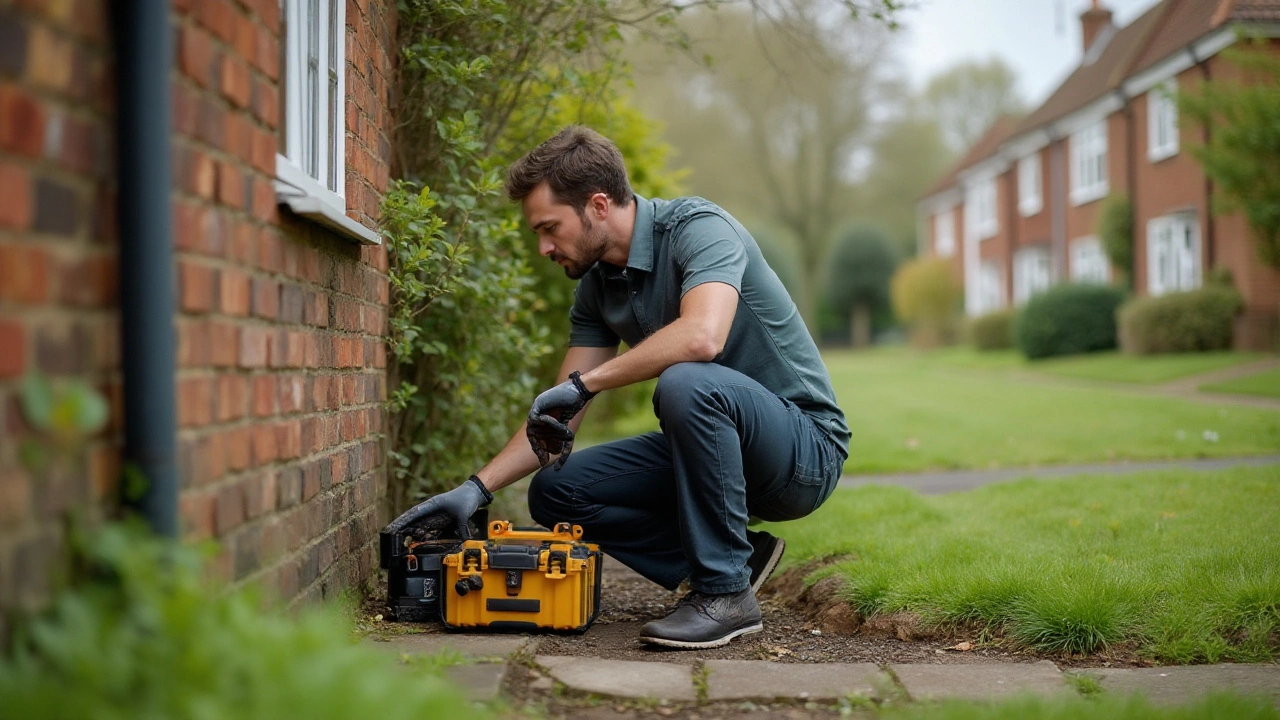Outside Repair: Quick Tips to Keep Your Home Strong
Got cracks in your walls, a leaky roof, or a shaky foundation? You don’t need a PhD to start fixing outside problems. Below are simple steps you can take right now to stop damage from spreading and save money.
Spot the Warning Signs Early
First thing is to know what to look for. Cracks that grow wider than a pencil, doors that stick, or water stains on exterior walls are red flags. A roof that drips after a light rain usually means a missing shingle or damaged flashing. Check the ground around your house for wet spots – they could signal runoff problems or a failing drainage system.
When you see any of these, write down the location and size. A quick photo helps the contractor understand the issue before they even arrive, which can cut down on inspection fees.
Quick Fixes Before the Pros Arrive
If you’re dealing with a small roof leak, use a tarp or waterproof sheeting to cover the area until a roofer can replace the shingle. For minor foundation cracks, a DIY epoxy filler works well for cracks under 1/4 inch. Clean the crack, apply the filler, and smooth it with a putty knife. This isn’t a long‑term solution, but it stops water from seeping in.
For exterior walls, seal gaps around windows and doors with a high‑quality caulk. It’s cheap, easy, and stops drafts that can cause moisture buildup inside the wall cavity.
When to Call a Professional
If cracks are wider than a quarter inch, if you notice doors that won’t close properly, or if the roof needs more than a few shingles, bring in a specialist. Professional foundation repair like piering or underpinning can cost more, but it protects the whole structure. Roof replacement can run high – think $30,000 for a large home – so ask for a detailed quote and compare at least three contractors.
Ask the contractor for references, check their insurance, and confirm they’re licensed for exterior work in your area. A reputable pro will also explain why a repair is needed, not just give you a price.
Saving Money on Outside Repairs
Plan repairs for the dry season; work is faster and you avoid weather delays that raise costs. Re‑use materials where possible – salvaged bricks or reclaimed timber can look great and cut expenses. Also, keep a maintenance log: regular gutter cleaning, roof inspections, and drainage checks keep small problems from turning big.
Finally, consider financing options. Some roofers offer payment plans, and many banks have home‑improvement loans with low interest. Knowing your budget ahead of time helps you choose the right repair path.
Keeping the outside of your house in good shape protects the interior, saves energy, and boosts resale value. Start by spotting the signs, do the easy fixes yourself, and call a pro for the big jobs. Your home will thank you.
Effective Methods for Fixing Foundation Cracks: Inside vs. Outside Approaches
- Gavin Whitaker
- |
- |
- 0
Repairing foundation cracks can be approached from either the inside or outside of a building. Knowing which method is best suited for your specific situation depends on factors like the extent and location of the damage, climate, and type of foundation. By understanding the advantages and disadvantages of both internal and external repairs, homeowners can make informed decisions. This article provides insights into when and how to choose the right repair method to ensure the longevity and safety of a structure.
View more